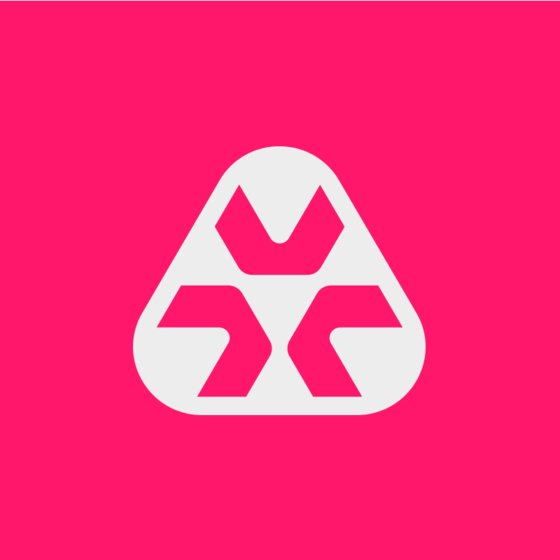Imagine being the CTO of a company with hundreds of remote offices scattered across the globe. Keeping tabs on all those networks, ensuring smooth operations, and troubleshooting issues – sounds like a logistical nightmare, right?
Not with remote network management, which is here to save your sanity.
Remote network management enables administrators to monitor and manage an entire network system from a distant location. It involves scanning for inconsistent performance metrics, detecting cybersecurity vulnerabilities, troubleshooting network components, and implementing strategic modifications to optimize communication paths.
It includes using software tools and applications to remotely control, monitor, update, and maintain networked systems.
This technique is essential in today's global landscape, where enterprises operate in multiple locations and employees work remotely. Remote network management ensures business continuity, customer satisfaction, and information security by consistently monitoring the network's functionality, efficiency, performance, and security.
It reduces the need for onsite IT personnel, thus lowering costs and improving operational efficiency.
In network management, things should be fully software defined.
I should not have to think about the physical network. I should be able to describe in a language or a UI how I want things, whatever they are, to connect to one another and the network should make it happen.
Physical location, which cloud, which telecom, etc., should not matter. As long as it’s on Earth, it should be able to communicate.
In this article, I’ll tell you everything you need to know about harnessing the power of remote network management software to keep your geographically dispersed infrastructure humming along like a well-oiled machine.
I’ll share a step-by-step guide to implementation, the benefits and challenges of remote network management systems, and suggest tools to help you manage your remote network!
Importance of Remote Network Management
Remote network management has gained increased significance in the modern digital world, primarily due to the surge in remote work and distributed teams. Through efficient remote network management, organizations can ensure business continuity, reduce potential downtime, and maintain a high level of service for end-users.
This is essential for businesses relying heavily on their IT infrastructures to run their operations. By closely monitoring network parameters, IT teams can solve issues before they become problematic, thereby reducing the potential business impact.
Remote network management provides flexibility to IT professionals, allowing them to address any issues promptly. It's about streamlining operations, minimizing risks, and enhancing productivity.
Step-by-Step Guide to Remote Network Management
Taking control of your geographically dispersed network infrastructure requires a strategic approach.
Here's a breakdown of the key steps to guide your implementation of remote network management:
1. Define Your Needs and Goals:
- Identify Network Scope: Define the network environment you want to manage remotely. This includes identifying your infrastructure's physical locations, devices, and applications.
- Establish Performance Benchmarks: Determine the key performance indicators (KPIs) critical for your network. This could include bandwidth usage, latency, packet loss, and uptime metrics.
- Outline Security Requirements: Define your organization's security needs and desired level of control for remote access and management of network devices.
2. Choose the Right Tools:
- Evaluate Tool Capabilities: Research and compare different remote network management tools based on your needs and goals. Consider factors like features, scalability, ease of use, and budget.
- Prioritize Security: Ensure the chosen tools prioritize robust security features, including secure remote access protocols, encryption, and user authentication mechanisms.
- Consider Integration: Evaluate how the chosen tools integrate with existing infrastructure and tools within your IT ecosystem.
3. Develop a Deployment Plan:
- Pilot Testing: Before full-scale deployment, chosen tools are pilot-tested in a non-critical environment. This allows you to identify and resolve any configuration or integration issues.
- Develop Training Materials: Ensure your IT staff receives adequate training on the new remote network management tools. This will empower them to leverage the tools effectively for efficient network management.
- Prepare for Ongoing Maintenance: Establish a plan for ongoing maintenance and updates for your remote network management tools. This ensures optimal performance and security over time.
4. Implement and Monitor:
- Gradual Rollout: Implement the chosen remote network management tools in a phased approach. This allows for better control and identification of potential issues during the rollout process.
- Monitor Performance: Continuously monitor the performance of your network after implementing remote management tools. Analyze key metrics and identify areas for further optimization.
- Refine Strategy (Optional): As you gain experience with remote network management, you can refine your strategy based on your evolving needs and insights gained from network monitoring data.
Additional Considerations:
- Security Best Practices: Implement strong security best practices, such as role-based access control (RBAC) and two-factor authentication, for remote access to network devices.
- Data Backup and Recovery: Maintain a robust data backup and recovery strategy to ensure business continuity in case of unexpected network outages or security incidents.
- Compliance Requirements: Ensure your remote network management practices comply with relevant industry regulations and data privacy laws.
By following these steps, you can successfully implement a remote network management system that empowers you to take control of your geographically dispersed network infrastructure, optimize performance, and ensure consistent IT service delivery across your entire organization.
Deployment Strategies for Remote Network Management
As organizations expand their infrastructure across multiple locations, implementing effective deployment strategies becomes crucial for remote network management success.
A well-planned deployment approach ensures your monitoring solution scales efficiently while maintaining performance across all network segments.
Architecture of Remote Network Monitoring Systems
At the core of any robust remote network management system lies a distributed architecture consisting of two primary components: the central server and remote probes.
Central Server
The central server functions as the command center of your remote network management system.
Typically installed at your main data center or Network Operations Center (NOC), it:
- Consolidates monitoring data from all locations into a unified dashboard
- Stores historical performance metrics and configuration data
- Processes alerts and notifications based on predefined thresholds
- Provides reporting and analytics capabilities for the entire network
- Manages user authentication and access controls for the monitoring system
Remote Probes
Remote probes are lightweight monitoring agents deployed across your distributed infrastructure.
These probes:
- Discover and map network devices at their respective locations
- Collect performance metrics and monitor local network segments
- Detect anomalies and issues in real-time
- Transmit monitoring data back to the central server
- Execute commands and configurations initiated from the central server
This architecture enables efficient remote network management by distributing the monitoring workload while maintaining centralized visibility and control.
Scalability Through Strategic Deployment
As your network grows, your remote network management system must scale accordingly. Here are key strategies to ensure scalability:
Multi-Probe Deployment
Deploying multiple probes within the same site can significantly enhance monitoring capacity for extensive networks or locations with high device density.
This approach:
- Distributes monitoring load across multiple probes to prevent bottlenecks
- Provides redundancy in case one probe experiences issues
- Allows for more frequent polling of critical devices without performance impact
- Enables more detailed monitoring of specific network segments
Hierarchical Deployment
For very large enterprises with numerous locations, a hierarchical approach to remote network management can be optimal:
- Implement regional collection servers that aggregate data from multiple sites
- Configure these mid-tier servers to perform initial data processing and filtering
- Forward summarized data to the central server for enterprise-wide visibility
- Reduce bandwidth consumption between remote sites and headquarters
Site-wise Segmentation
Organizing your remote network management by site helps declutter your monitoring and simplifies troubleshooting:
- Create logical groupings of network devices based on location
- Implement site-specific monitoring thresholds and policies
- Configure dashboards that provide both site-specific and global views
- Assign regional IT staff appropriate access to their relevant network segments
Communication Protocols in Remote Network Management
Secure and efficient communication between probes and the central server is essential for reliable remote network management. The most common protocols include:
HTTP/HTTPS
Most modern remote network management systems use HTTP/HTTPS for communication between components:
- HTTPS provides encrypted data transmission for security
- XML or JSON formatting structures the monitoring data
- RESTful APIs enable standardized communication
- Compression techniques reduce bandwidth consumption
SNMP (Simple Network Management Protocol)
While probes often use SNMP to monitor network devices, some systems also use it for internal communication:
- SNMPv3 provides enhanced security with authentication and encryption
- Trap forwarding allows critical alerts to bypass standard polling cycles
- MIB filtering reduces unnecessary data transmission
Custom Protocols
Some enterprise-grade remote network management solutions implement proprietary protocols optimized for:
- Minimizing bandwidth usage in constrained network environments
- Enhancing security beyond standard protocols
- Supporting specialized monitoring functions specific to certain industries
- Providing faster data transmission for time-sensitive metrics
When deploying your remote network management solution, consider the communication requirements between your central server and remote probes, especially for sites with limited bandwidth or high-security needs.
By implementing these deployment strategies, you can create a remote network management system that scales with your organization's growth while maintaining efficient monitoring capabilities across all locations.
-

NinjaOne
Visit WebsiteThis is an aggregated rating for this tool including ratings from Crozdesk users and ratings from other sites.4.8 -

Atera
Visit WebsiteThis is an aggregated rating for this tool including ratings from Crozdesk users and ratings from other sites.4.6 -

SuperOps
Visit WebsiteThis is an aggregated rating for this tool including ratings from Crozdesk users and ratings from other sites.4.6
Automation in Remote Network Management
In today's fast-paced digital environment, manual network management is no longer sufficient for organizations with complex infrastructure. Automation has become the backbone of efficient remote network management, enabling IT teams to do more with less while maintaining optimal network performance.
Automated Asset Discovery
One of the most challenging aspects of remote network management is maintaining an accurate inventory of all connected devices across distributed locations. Manual tracking is prone to errors and nearly impossible to keep current.
Automated asset discovery transforms this process by continuously scanning your network to identify and catalog all connected devices – from servers and workstations to IoT devices and shadow IT.
With automated asset discovery, your remote network management system can:
- Detect new devices the moment they connect to your network
- Automatically classify devices based on type, function, and criticality
- Create detailed network topologies that update in real-time
- Set up instant alerts when unauthorized devices appear
- Track hardware and software inventory across all locations
This capability is particularly valuable for organizations with rapid growth or frequently changing network environments. Rather than wondering what might be lurking on your network, you'll have complete visibility with minimal effort.
Scripting for Network Automation
While remote network management tools offer impressive out-of-the-box functionality, the real power comes from customization through scripting. Scripts allow you to create tailored workflows that automate repetitive tasks across your network infrastructure.
Effective network automation scripts can:
- Perform scheduled configuration changes across multiple devices simultaneously
- Implement standardized security policies across your network
- Conduct automatic health checks on critical infrastructure
- Generate customized reports for compliance and performance analysis
- Remediate common issues without human intervention
For example, instead of manually checking each router's configuration for compliance, a script can automatically verify all devices against your security standards and flag or correct deviations.
Organizations implementing network automation scripts typically see significant reductions in time spent on routine configuration tasks and fewer configuration errors that lead to outages.
Automated Backup and Restoration
Network disruptions can happen without warning, and the ability to quickly restore configurations can mean the difference between minutes and days of downtime. Automated backup and restoration capabilities are essential to a solid remote network management strategy.
With automated configuration management, your system can:
- Schedule regular backups of all network device configurations
- Store version histories to track changes over time
- Automatically restore configurations after hardware replacements
- Roll back problematic changes with a single click
- Test configuration changes in a sandbox environment before deployment
These capabilities ensure business continuity and provide peace of mind, knowing that even catastrophic network failures can be quickly remediated.
Implementing these automation capabilities in your remote network management strategy will improve efficiency, enhance security, reduce human error, and allow your IT team to focus on strategic initiatives rather than mundane maintenance tasks.
The trend toward automating network management processes continues to grow, with automated backup and restoration capabilities recognized as critical for business continuity.
Remember: the most effective remote network management systems combine powerful automation with human oversight. The goal isn't to replace your IT team but to amplify their capabilities through intelligent automation.
Benefits of Implementing Remote Network Management
Implementing remote network management can offer several benefits to companies of various sizes:
- Centralized Visibility and Control: Remote network management tools provide a single pane of glass for monitoring and managing your entire network infrastructure, regardless of location. This centralized approach streamlines network operations and simplifies troubleshooting for IT teams.
- Improved Efficiency and Resource Allocation: Automating routine network management tasks, such as configuration changes and firmware updates, frees up valuable time for IT professionals to focus on more strategic initiatives. Additionally, remote management can reduce the need for on-site IT staff at remote locations, optimizing resource allocation across your organization.
- Proactive Problem Identification and Resolution: Remote network management tools offer real-time insights into network performance, allowing for proactive identification of potential issues before they escalate into outages or performance degradation. This proactive approach minimizes downtime and ensures business continuity.
- Enhanced Security Posture: Remote management tools enable IT teams to quickly detect and respond to security threats by providing comprehensive visibility into network activity across their entire infrastructure. This real-time awareness allows for the implementation of effective security measures to mitigate risks and protect sensitive data.
- Reduced Operational Costs: The centralized management and automation capabilities of remote network management solutions can lead to significant cost savings. Lower travel expenses for network troubleshooting and reduced reliance on on-site IT staff at remote locations improve your organization's bottom line.
Remote Network Management Challenges
Remote network management brings various challenges that must be addressed to maintain a secure, efficient, and streamlined IT environment. One of these challenges is connectivity.
Connectivity
Maintaining a stable and secure connection to the network devices is paramount in a remote network management setup. However, factors such as poor internet connectivity, firewall configurations, and incompatible hardware can disrupt these connections, impacting the overall network performance and management.
Security
Security also poses a significant challenge in remote network management. With devices geographically dispersed, ensuring that each node in the network is secure from cyber threats is a daunting task. Multiple network entry and exit points can become potential vulnerabilities for cyber attackers to exploit. Protecting corporate data and sensitive information while enabling accessibility for remote management is a delicate balancing act requiring strong cybersecurity protocols.
Prompt Resolution
Another hurdle in remote network management is identifying and resolving issues promptly. Network performance issues may not be as readily noticeable when managing networks remotely, leading to delays in issue resolution.
Monitoring tools can be implemented to observe the network's performance, but they require regular updates and maintenance to function effectively. Additionally, troubleshooting network problems remotely can be more complex than on-site, requiring a deep understanding of the network's layout and operations.
Despite the challenges, these factors underscore the need for professional IT staff who can effectively manage remote networks.
Remote Network Management Tools
Remote network management tools are instrumental in monitoring and maintaining an organization's computer networks. These tools allow routine network issues to be easily identified, diagnosed, and resolved, often without an on-site network technician.
The key aspects include performance monitoring, IP address management, network device management, fault monitoring, and traffic analysis.
| Tool Category | Benefits | Uses | Examples |
| Network Monitoring Tools | -Real-time visibility into network performance metrics (bandwidth usage, latency, packet loss) -Identify potential bottlenecks and performance issues -Set alerts for anomalies and receive notifications | -Monitor overall network health -Proactively identify and troubleshoot issues -Ensure optimal performance for critical applications | *SolarWinds Network Performance Monitor (NPM) *PRTG Network Monitor *Datadog Network Performance Monitoring |
| Configuration Management Tools | -Standardize network device configurations across your infrastructure -Automate configuration changes and updates -Reduce human error and ensure consistent configurations | -Apply consistent security policies across the network -Simplify rollouts of new devices and configurations -Ensure compliance with security regulations | *Ansible *Puppet *Chef |
| Remote Access Tools | -Securely access and manage network devices remotely from a centralized console -Perform troubleshooting tasks without physically visiting remote locations -Reduce downtime associated with on-site troubleshooting | -Provide IT staff with secure remote access to network devices -Enable rapid response to critical issues -Improve efficiency and productivity of IT teams | *TeamViewer *Splashtop *BeyondTrust Remote Desktop |
| Patch Management Tools | -Automate the identification, download, and installation of security patches for network devices -Reduce the risk of vulnerabilities and security breaches -Ensure all devices are running the latest security updates | -Maintain a secure network environment -Minimize the time and effort required for patch deployment -Reduce the risk of security incidents | *Microsoft System Center Configuration Manager *Ivanti Patch Manager *ManageEngine Patch Manager Pro |
| Reporting & Analytics Tools | -Generate comprehensive reports on network performance and activity -Identify trends and patterns in network behavior -Gain insights for optimizing network performance and security | -Track key performance indicators (KPIs) for network health -Analyze network usage patterns for capacity planning -Improve decision-making for network management strategies | *Splunk *Elasticsearch *Kibana |
As the modern digital landscape continues to evolve, so does the importance of remote network management tools in ensuring a network's smooth, secure, and efficient operation.
Remote Network Management Examples
- A global telecommunication company manages to streamline its remote network management using advanced IT software. The company has thousands of remote workstations worldwide and struggles to maintain the network's security and functionality effectively.
- Implementing a state-of-the-art remote network management system enables real-time visibility. It alerts the tech team if abnormalities occur, allowing them to monitor and remedy potential IT issues proactively.
- This proactive approach improves network uptime and minimizes vulnerabilities.
- An ecommerce giant employs automated network management tools to manage the increasing network complexity of its rapid business expansion.
- Using AI-enabled tools, they can predict potential network failures and conduct automated fixes, reducing their downtime substantially.
- The tool equips them with predictive analytics to assess and plan network capacity, which is crucial for handling huge website traffic, especially during peak seasons.
What's Next?
AI and ML will play substantial roles in remote network management in the coming years. These technologies enable predictive analytics, automated response systems, and intelligent troubleshooting, which can significantly reduce network downtime.
Example: An AI system could analyze network data to predict when a specific router will reach capacity, allowing for proactive capacity planning or equipment upgrades.
Network slicing divides a physical network into multiple virtual networks, each tailored for specific applications or services. By isolating different traffic types, network slicing enables optimized resource allocation, improved QoS, and enhanced security. It's akin to creating dedicated lanes on a highway for various vehicle types, ensuring smooth traffic flow and preventing congestion.
Example: A mobile network operator could create multiple slices: one for high-speed data, another for low-latency applications, and a third for massive IoT devices. This ensures that each type of service receives the necessary resources and performance guarantees.
A digital twin is a virtual replica of a physical network that mirrors its real-time behavior and performance. It's a powerful tool for network planning, troubleshooting, and optimization. By simulating various scenarios and analyzing data, network engineers can identify potential issues, test new configurations, and make informed decisions to improve network performance and reliability.
Example: A telecommunications provider can create a digital twin of its network to test the impact of adding new cell towers, optimizing traffic routing, or responding to natural disasters.
By staying informed about these trends, organizations can prepare for the future of remote network management and gain a competitive advantage.
Subscribe to The CTO Club’s Newsletter for more insights on remote network management.







